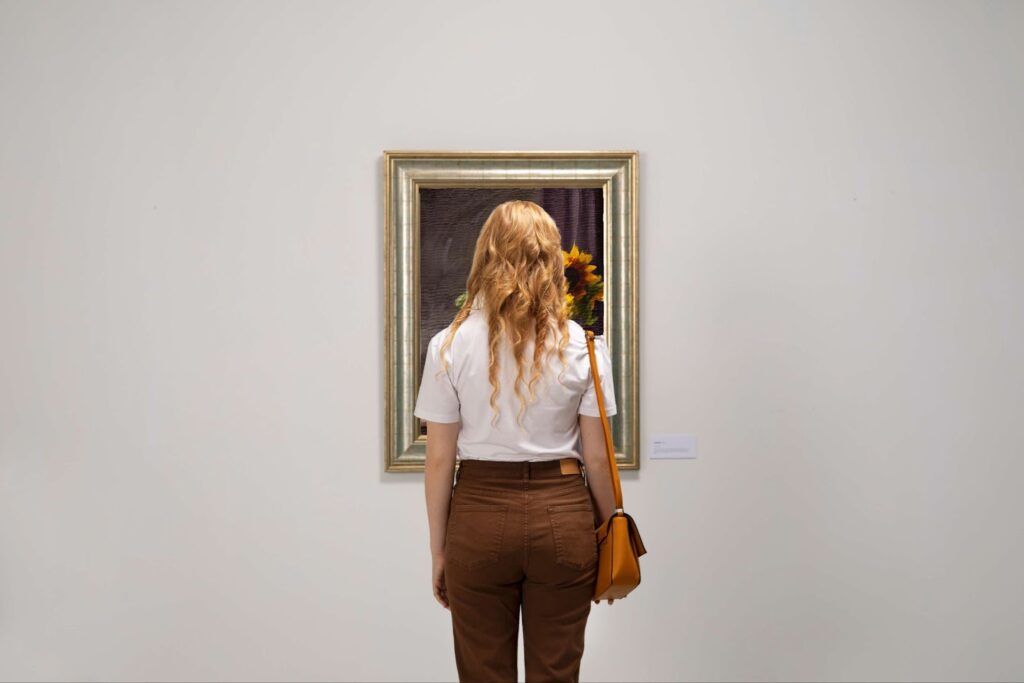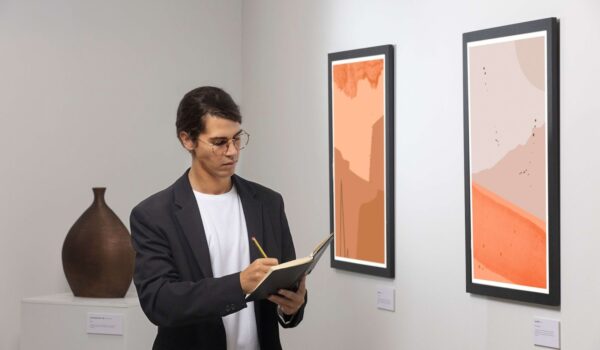As a photographer, getting your work showcased in an exhibition is a thrilling milestone. However, the process of labeling your photography for display can be quite intricate and pivotal in conveying your artistic vision effectively. In this article, we’ll delve into the essential guidelines and techniques for crafting captivating and informative labels that complement your images, leaving a lasting impression on viewers. Discover the secrets to ensuring your photographs shine in the spotlight, captivating audiences, and enhancing the overall exhibition experience. Let’s begin this journey of mastering the art of photography labeling for exhibitions.
Unveiling the Power of Labeled Photographs in an Exhibition
When stepping into the captivating realm of an art exhibition, it’s not uncommon to be spellbound by the vibrant array of photographs adorning the walls. These artistic masterpieces, carefully curated to evoke emotions and spark contemplation, are brought to life through the vision of talented artists. Amidst this visual feast, labels play a crucial role, beyond being mere markers of identification. Let’s dive into the enriching world of labeled photographs and unearth the treasure trove of reasons why they hold immense value for both artists and viewers.
Enlightening the Viewer’s Perception:
Labels in an exhibition are more than just placards with the artist’s name and title of the work. They are like portals that transport the audience into the very essence of the photograph, unlocking a deeper understanding of its significance and impact. Beyond the initial visual allure, these labels can act as illuminating guides, unraveling the stories and emotions captured within the frame. By offering a glimpse into the date and location of the photograph’s inception, viewers are encouraged to explore the historical or geographical context, forging a stronger connection with the artwork.
Emphasizing the Artist’s Intention:
Every photograph carries a unique narrative, a reflection of the artist’s creative vision and purpose. Labels act as the artist’s voice, articulating their thoughts and intentions behind the image they’ve crafted. Whether it’s an exploration of the human condition, a portrayal of nature’s grandeur, or a commentary on societal issues, the label allows the artist to communicate directly with the audience. This opens up a dialogue between the creator and the viewer, leading to a more profound appreciation of the artistry.
Encouraging Art Appreciation and Sales:
Labels can also prove to be valuable tools in promoting art appreciation and encouraging potential buyers. The subtle presence of a colored dot sticker, indicating a sold piece, piques the curiosity of art enthusiasts, adding an air of exclusivity and desirability to the remaining artwork. Furthermore, by having all the essential details encapsulated in the label, including the artist’s name, title, and additional insights, potential buyers can make informed decisions and connect with the artwork on a more personal level.
Elevating the Educational Aspect:
Art exhibitions not only entertain but also educate. Labels serve as educational beacons, presenting an opportunity for visitors to learn more about photography, the artists, and the subject matter. Exhibitions often attract a diverse audience, ranging from art aficionados to curious novices. In this context, labels become educational tools that bridge the knowledge gap, empowering viewers to develop a better grasp of photography as an art form and its impact on society.
Crafting Captivating Exhibition Labels
When preparing to showcase your photographic masterpieces at an exhibition, a well-crafted label can make all the difference in engaging and captivating your audience. To ensure your photographs leave a lasting impression, consider including the following essential information on each label:
The Artist’s Name:
Introduce yourself to the audience by prominently displaying your name on the label. This establishes your identity as the creative mind behind the captivating photographs they are about to witness.
Title of the Work:
Give each photograph a meaningful and intriguing title that not only captures the essence of the image but also sparks curiosity in the viewer’s mind. A compelling title can make your artwork memorable and relatable.
Date the Photograph was Taken:
Provide the date when the photograph was captured, offering visitors a glimpse into the moment when the artistry unfolded. This adds a sense of historical context and chronicles your artistic journey.
Dimensions:
Mention the dimensions of the photograph, allowing viewers to appreciate the scale and proportions of your work. This information helps potential buyers visualize the artwork in their desired space.
Medium or Paper:
Describe the medium or type of paper used to print the photograph. This detail provides insight into your artistic process and the techniques employed, showcasing your mastery of various mediums.
Additional Relevant Information:
Consider including supplementary information that enriches the viewer’s understanding of the photograph. This could include insights into the inspiration behind the work, the location where the image was captured, or any unique challenges faced during the creative process.
Agent or Gallery Representation:
If you have the support of an agent or gallery, proudly showcase their information on the label. This not only adds credibility to your work but also offers interested buyers a channel to connect with you or make inquiries.
Price and Availability:
Clearly mark the price of each photograph to facilitate potential sales. For pieces not intended for sale, use “NFS” (not for sale) to avoid any confusion. If determining the pricing proves challenging, consult with fellow artists or gallerists for valuable guidance.
QR Code (Optional):
Embrace modern technology by incorporating a QR code on the label. This code can link back to your website, your agent’s website, or provide additional information about the photograph. It enables visitors to delve deeper into your portfolio and artistic journey.
Elevate Your Exhibition’s Presentation with a Cohesive Font Style
One of the most crucial elements in creating a professional and visually appealing exhibition is to maintain a consistent font throughout your display. By adopting a unified font style, you can elevate the overall presentation and lend an air of sophistication to your exhibition. A consistent font not only enhances readability but also conveys a sense of coherence and organization, leaving a lasting impression on your audience.
Enhance Readability to Engage Your Audience
The success of your exhibition not only depends on the artistic brilliance of your photographs but also on how effectively you convey your message to the audience. Legibility plays a crucial role in this aspect, especially when it comes to titles and textual information. Follow these guidelines to ensure all your text is easily readable from a distance:

Opt for Simple and Large Fonts: Selecting a font that strikes a balance between simplicity and elegance is key. Fonts like Arial or Times New Roman are timeless choices that provide excellent readability. Additionally, opt for a larger font size (around 20 to 24 points) for titles and labels to ensure clear visibility from a distance.
Test Legibility: Before finalizing your font size and style, perform a legibility test. Step back at various distances from your labels and captions to ensure they remain easily readable. If possible, seek feedback from others to gauge their reading experience.
Accommodate Different Viewing Abilities: Not all visitors will have perfect vision. To cater to individuals who may need glasses or have visual impairments, prioritize a font size that accommodates a range of viewing abilities. This inclusive approach ensures that everyone can enjoy and engage with your exhibition.
Leverage Online Resources: If you’re uncertain about the ideal font size and style, take inspiration from established galleries and museums. Explore their online exhibits to observe how they handle text legibility, and apply those insights to your own exhibition.
The Lag Hack – Igniting Curiosity and Drawing Crowds
Ever wondered how to create a buzz around your exhibited photographs and draw curious crowds? Introducing the Lag Hack, a psychological tactic to pique the interest of visitors and leave them eager to explore your artwork.
Picture yourself in an exhibition hall, surrounded by captivating photographs. Now, think about what catches your attention more: images with no one around them or a crowd of intrigued spectators engaged in conversation?
Chances are, the latter scenario sparks your curiosity, making you wonder what all the fuss is about. That’s precisely where the Lag Hack comes into play. Follow these steps to implement this ingenious strategy and stand out from the crowd:
Unique and Engaging Information:
Incorporate captivating and thought-provoking information on the label. This could be a captivating story behind the photograph, an interesting fact about the subject, or an unusual technique employed in the composition. Make sure this information is exclusive to each photograph, creating a sense of exclusivity.
Extended Label Length:
Extend the relevant information section of the label slightly. This encourages visitors to spend more time reading and absorbing the details, inadvertently creating a lag in the flow of foot traffic.
Gather a Small Crowd:
As a few intrigued visitors stop to read the label, a subtle lag in the flow of the exhibition’s foot traffic occurs. This natural human behavior attracts more onlookers, as people tend to be curious about what’s capturing others’ attention.
Amplifying Curiosity:
As the crowd around your photograph grows, so does the curiosity of passersby. People are drawn to investigate what others find captivating, creating a domino effect that increases your photograph’s visibility.
Social Validation:
The growing crowd also serves as social validation of your work’s appeal. Potential buyers are more likely to perceive your photographs as desirable and valuable if they see others showing genuine interest.
Conversations and Networking:
The gathered crowd facilitates organic conversations about your artwork, further enhancing its impact. It presents an excellent opportunity for you to engage with visitors, explain your creative process, and establish meaningful connections.
Conclusion
Through this article, we have explored the significance of clear and informative labels in enhancing the overall visitor experience, fostering a deeper understanding of the exhibited artworks, and promoting a meaningful connection between the audience and the artists’ intentions. Effective exhibition labels act as essential intermediaries, bridging the gap between the artwork and the viewer. By providing context, background information, and insightful details, these labels empower visitors to engage more thoughtfully with the art, encouraging them to explore the nuances and intricacies that might otherwise go unnoticed.
